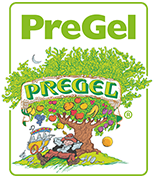
With a renewed focus on unique flavors that offer vitamins, minerals, fiber and other important nutrients, the trend of providing health and wellness options in the frozen dessert industry shows no signs of slowing in 2008. This new industry focus is geared towards crushing the ongoing healthy versus tasty debate, and instead offering products that provide both to consumers.
Green tea, with its numerous health benefits, is a fast-growing favorite flavor, according to CBS News Stories.® Packed with fiber, preliminary research shows that green tea helps in weight loss, prohibits fat gain and decreases the amount of fat that accumulates in the liver. Tests also prove that green tea lowers cholesterol and triglyceride levels. Green tea can be found on the market in conjunction with fiber products such as BENEO™ and performs best as a sorbet, but can be used as flavoring for ice cream and gelato.

Antioxidants are another wellness option making an appearance on the frozen dessert scene with the introduction of superfruit flavors. The term superfruits was originally coined by the food and beverage industries as a way to categorize and market certain novel fruits – whether common or exotic – that possess significantly high levels of nutrients and antioxidants, while exhibiting a distinguished flavor profile. The antioxidants in superfruits counteract unstable oxygen molecules that are associated with cancer, heart disease and aging effects. Countless studies have proven that a high antioxidant defense system contributes to lowering our risks for disease, stimulating our immune system and protecting brain neurons from damage, among other positive effects. Nutritional benefits are not the only offering of superfruits – as their flavors are unique and refreshing as well.
More traditional and widely known, several of these superfruit flavors
are already being offered in many frozen dessert operators’ cases and on menu boards. According to choosecherries.com, cherries and blueberries have the highest antioxidant levels. Other berries that fit into this category are raspberries, strawberries and blackberries. Here are a few more exotic options to consider:
- Pomegranate, which emerged on the market a few years ago, can be found in many grocery stores. This fruit has a deep red thick skin, white to deep red pulp and contains several hundred seeds. The fleshy outer portion of the seed is what can be eaten and the taste ranges from sweet to very sour to tangy.
- Goji, a pinkish red berry with a mild flavor, is small like a cranberry or cherry. It is grown in China and has been marketed to increase life energy, a very attractive concept to aging Baby Boomers. These berries contain more amino acids than spinach; more beta-carotene than carrots; are loaded with vitamins B1, B2 and B6 and support proper digestion, a useful fact when promoting goji-flavored dessert for catering menus.
- Pomelo is a citrus fruit grown in China. This would make a refreshing sorbet, with its grapefruit-like flavor and sweet, mild finish. Currently, it is very popular in candle scents, but is fast emerging on the edible scene, as well.
- Lacuma, a fragrant fruit whose flavor is similar to maple, is one of the Peruvians’ most popular choices for their ice cream. Available in slices or sun-dried, it has been referred to as the “Gold of the Incas.” The Lacuma is low in acid and sugar, offers carbohydrates, fiber, vitamins and minerals and is loaded with beta-carotene, niacin, iron, calcium and phosphorous.
- Acai is a small, black-purplish palm fruit that Brazilians love as an ice cream flavor, as well as a sorbet, juice blend, smoothie and soda flavor. It has been proven to help reduce cholesterol levels, and is high in fiber and amino acids. Acai berries are available on the market in freeze-dried form, as well as in seeds that are ground and made into a paste for flavorings, and can be used as a natural food coloring agent.
Additionally, Tara Gidus, MS, RD, CSSD, LD/N, offers this list of new groundbreakers from her blog “The Diet Dish” on healthline.com:
- Camu Camu is a cherry-like berry, grown in the Amazon. It appears on the market like acai and goji berry, in concentrate form.
- Lulo, from South America, looks like a tomato but tastes like a tangy pineapple. It is available in juice concentrates or purées, which can be added to smoothies, ice cream or baked goods.
- Capuacu, also from the Amazon, is a member of the cocoa family. It is brown, fuzzy and the size of a melon. The pulp is white, creamy and is suggested as a substitute for cocoa in chocolate products.
These various superfruits and fiber-rich products are truly giving frozen dessert makers a slew of choices to bring both taste and wellness to their lines. Settled is the healthy versus tasty debate, as achieving both in one bite is possible.
Sources:
David Lidsky, “The Superfruits are Coming,”
www.fastcompany.com
Del Pozo-Insfran, D. C. H. and Talcott, S.T. 2004 Phytochemical composition and Pigment Stability of Acai. Journal of Agriculture and Food Chemistry 52:1539 – 1545
Choosecherries.com
“The Diet Dish,” www.healthline.com
CBS News Stories
“Superfruits,” www.wikipedia.com
